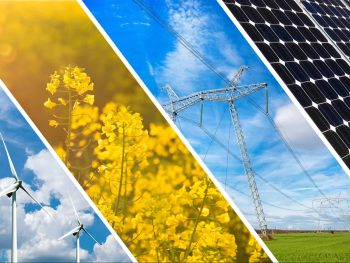Pioneering a new approach to systems transformations
IIASA hosts the database that the Intergovernmental Panel on Climate Change (IPCC) used to develop its Special Report on Global Warming of 1.5°C. It was while looking at this in 2017, that IIASA researchers noticed that each of the 400 global scenarios that could meet the 1.5°C target relied on negative emissions technologies. This realization resulted in a project that saw scientists from several research programs at the institute collaborating on the development of the LED scenario. Rather than focusing solely on climate change, the LED scenario instead incorporates the Sustainable Development Goals (SDGs) as a framework. The development process took just three months, attesting to the high degree of interdisciplinarity and cooperation between programs and researchers at the institute.
The LED scenario meets the Paris Agreement target of limiting global warming to 1.5°C by 2100 and is the first to do so by shrinking the energy system rather than relying on unproven negative emissions technologies, such as bioenergy with carbon capture and storage (BECCS). In the scenario, global energy use is reduced by 40% compared to today. The study [1] shows that dramatic transformations in the way we move around, heat and cool our homes, and buy and use devices and appliances in our cities can help raise living standards in the Global South to meet the SDGs while also remaining within the 1.5°C target. According to the researchers, improved living standards for all need not come with a large increase in energy demand at the expense of the global environment.
The study had an exceptional impact on both science and policy. Altmetric statistics by Nature show the paper ranked in the top percentile of all articles included in their sample of 250,000 publications. The LED scenario was also adopted as one of the highlighted marker scenarios for the IPCC Special Report on Global Warming of 1.5°C and was instrumental in the planning for a special chapter on Demand, Services, and Social Aspects of Mitigation (Chapter 5, Working Group III) in the ongoing Sixth IPCC Assessment Report.
In terms of policy impact, the end-use demand perspective and the policy implications of LED have been highly influential in both international as well as climate policy circles, including an initiative by the Japanese government to present an alternative demand-side policy strategy for consideration at the G20 meeting. Further impacts are expected from a detailed policy interpretation brief (Figure 1) written in 2018 to be published in 2019. This policy brief also constituted part of the contract deliverables for the external ALternative Pathways toward Sustainable development and climate stabilization (ALPS) project with the Research Institute of Innovative Technology for the Earth (RITE) in Japan.
References
[1] Grubler A, Wilson C, Bento N, Boza-Kiss B, Krey V, McCollum D, Rao N, Riahi K, et al. (2018). A low energy demand scenario for meeting the 1.5 °C target and sustainable development goals without negative emission technologies. Nature Energy 3 (6): 517-525
[2] Creutzig F, Roy J, Lamb JWF, Azevedo IML, Bruine de Bruin W, Dalkmann H, Edelenbosch O, Geels FW, et al. (2018). Towards demand-side solutions for mitigating climate change. Nature Climate Change 8 (4): 260-263.
[3] Parkinson S, Krey V , Huppmann D , Kahil T, McCollum D, Fricko O , Byers E , Gidden M, et al. (2018). Balancing clean water-climate change mitigation tradeoffs. Environmental Research Letters 14 (1): e014009.
[4] Wilson C, Pettifor H, Cassar E, Kerr L, & Wilson M (2019). The potential contribution of disruptive low-carbon innovations to 1.5 °C climate mitigation. Energy Efficiency 12 (2): 423-440.
Further information
- Tyndall Centre for Climate Change Research, University of East Anglia, UK
- University of Lisbon, Portugal
- Imperial College-London, UK
- University of Oxford, UK
- Mercator Research Institute on Global Commons and Climate Change, Germany
- Research Institute of Innovative Technology for the Earth (RITE), Japan






